The automotive landscape is rapidly evolving, with electric vehicles (EVs) becoming increasingly popular alongside traditional combustion engine vehicles. In this article, we will compare the Mercedes E-Class and the Tesla Model Y, two distinct vehicles representing different philosophies in automotive design and technology.
Mercedes E Class vs Tesla Model Y – Osiągi, zasięg i zużycie w porównaniu
Porównaj osiągi, bagażnik, zużycie i cenę jednym rzutem oka.
Sprawdź, który samochód będzie dla Ciebie lepszym wyborem – Mercedes E Class czy Tesla Model Y?
Overview: Luxury vs. Innovation
The Mercedes E-Class is a storied nameplate from one of the oldest luxury car manufacturers, renowned for its blend of performance, comfort, and cutting-edge technology. The E-Class offers various engine options, including plugin hybrids and MHEVs, which cater to a discerning clientele seeking both power and efficiency.
On the other hand, the Tesla Model Y is an all-electric SUV that embodies innovation and sustainability. With a strong focus on electric range and high-tech features, the Model Y attracts a younger, more environmentally conscious audience. This comparison will delve into key technical aspects, innovations, and performance in both models.
Powertrains: Versatility vs. Electricity
The E-Class boasts a range of power options, including petrol hybrid and diesel hybrid models, with power outputs ranging from 186 HP to a staggering 585 HP. The plugin hybrid versions feature a battery capacity of 21.2 kWh, offering an electric range of up to 114 km, making it suitable for short commutes while still providing the option for longer journeys without relying solely on electric power.
Conversely, the Tesla Model Y is equipped with fully electric powertrains, offering a range of 455 km to a maximum of 600 km, thanks to its battery capacities of 62 kWh and 79 kWh. With power outputs from 299 HP to an impressive 534 HP in the Performance version, the Model Y provides instant torque and impressive acceleration, going from 0-100 km/h in as little as 3.7 seconds.
Performance and Handling: Precision Engineering vs. Instant Torque
Performance-wise, the Mercedes E-Class features all-wheel drive options and rear-wheel drive configurations, ensuring a dynamic driving experience across different terrains. Acceleration from 0-100 km/h varies from 4.5 seconds for the performance-oriented models, showcasing Mercedes-Benz’s engineering prowess and focus on a refined ride.
In contrast, the Tesla Model Y offers a more raw, exhilarating performance, with its electric motor providing immediate torque delivery. This results in acceleration figures that rival high-performance sports cars, and the all-wheel drive versions further enhance grip and handling, especially in adverse weather conditions.
Interior Quality and Technology: Luxury Finish vs. Minimalist Design
The Mercedes E-Class is renowned for its luxurious interior, featuring high-quality materials, sophisticated ambient lighting, and the latest MBUX infotainment system, which includes voice recognition and a multitude of features within a user-friendly interface. The focus here is on comfort, with spacious seats and advanced technology designed to enhance the driving experience.
On the other hand, the Tesla Model Y takes a minimalist approach to its interior design. The central touchscreen controls most of the vehicle's functions, and while it may appear sparse compared to the E-Class, it integrates cutting-edge technology seamlessly. Advanced features such as Autopilot and over-the-air software updates highlight Tesla's commitment to innovation and user experience.
Range and Efficiency: Traditional Consumption vs. Electric Savings
The Mercedes E-Class, depending on the engine type, showcases fuel consumption figures that vary significantly, with diesel variants at around 4.7 L/100 km to plugin hybrids at an impressive 0.4 L/100 km in electric mode. However, the overall efficacy is rooted in its conventional combustion engines alongside hybrid technology.
Conversely, the Tesla Model Y’s electric powertrains boast energy consumption rates between 14.9 to 17.3 kWh/100 km. With CO2 emissions of 0 g/km, it presents a compelling case for eco-friendliness and reduced operational costs. The long electric range combined with home charging options makes it a practical choice for daily use.
Conclusion: Which One Should You Choose?
The decision between the Mercedes E-Class and Tesla Model Y ultimately comes down to personal preference. If you prioritize luxury, a rich driving experience, and the backing of a prestigious automotive brand, the E-Class would be a compelling choice. However, if you are drawn towards innovative EV technology, sustainability, and cutting-edge features, the Tesla Model Y stands out as a strong contender.
Both vehicles offer distinct advantages, appealing to different customer bases while representing the future of automotive excellence. Whichever you choose, you’re assured of a sophisticated driving experience that reflects the advancements in car design and technology.
Szczegóły techniczne: konkretne różnice między modelami
Koszty i zużycie
Porównanie ceny i zużycia paliwa często pokazuje największe różnice. Tu decyduje się, który model lepiej pasuje do budżetu.
Tesla Model Y ma oczywisty przewagę cenową – jego cena zaczyna się od 197600 zł, podczas gdy Mercedes E Class kosztuje 258800 zł. Różnica wynosi około 61127 zł.
Pod względem zasięgu Tesla Model Y wypada przekonujący lepiej: osiąga do 622 km, czyli około 506 km więcej niż Mercedes E Class.
Silnik i osiągi
Pod maską widać, który model jest bardziej sportowy i kto ma lepszy start.
Pod względem mocy silnika Tesla Model Y ma ledwo zauważalny przewagę – 627 KM zamiast 585 KM. To różnica około 42 KM KM.
W przyspieszeniu 0–100 km/h Tesla Model Y jest trochę szybszy – 3.50 s wobec 4 s. Różnica wynosi około 0.50 s sekundy.
Prędkość maksymalna jest identyczna – oba auta osiągają 250 km/h.
Różnica widoczna jest również w momencie obrotowym: Mercedes E Class ciągnie zauważalny mocniej – 750 Nm wobec 493 Nm. Różnica to około 257 Nm.
Przestrzeń i praktyczność
Wnętrze, bagażnik i ładowność mają kluczowe znaczenie w codziennym użytkowaniu. Liczy się komfort i elastyczność.
Oba samochody oferują miejsce dla 5 osób.
Pod względem masy własnej Mercedes E Class jest ledwo zauważalny lżejszy – 1810 kg wobec 1976 kg. Różnica to około 166 kg kg.
Pod względem pojemności bagażnika Tesla Model Y oferuje oczywisty więcej miejsca – 822 L wobec 540 L. To różnica około 282 L litrów.
Pod względem ładowności Mercedes E Class wypada wyraźny lepiej – 640 kg wobec 472 kg. Różnica to około 168 kg kg.
Kto wygrywa pojedynek?
Tesla Model Y okazał się przewyższa w niemal każdym aspekcie i tym samym zdobywa tytuł DriveDuel Champion!
W tym porównaniu Tesla Model Y to bardziej wszechstronny wybór.
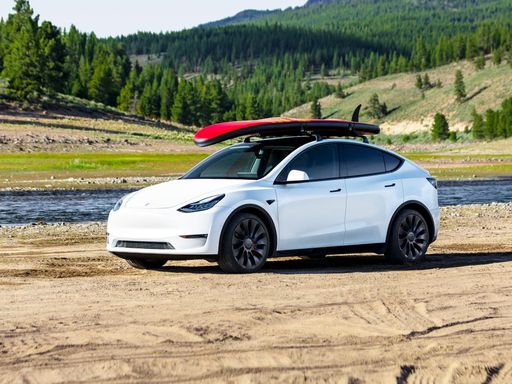
Tesla Model Y
Mercedes E Class
E‑Klasa to biznesowa elegancja w najlepszym wydaniu — wnętrze stawia komfort i technologię ponad wszystko, a linia nadwozia mówi jasno: tu rządzi klasa. Dla tych, którzy chcą podróżować z prestiżem i bez zmartwień, ale też oczekują, że samochód odwdzięczy się przy okazji przyjemną dynamiką, to bardzo rozsądny wybór.
szczegóły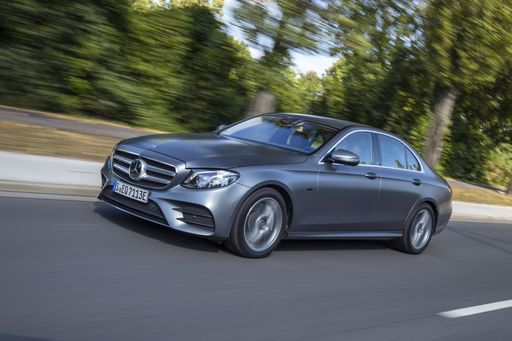 @ group-media.mercedes-benz.com
@ group-media.mercedes-benz.com
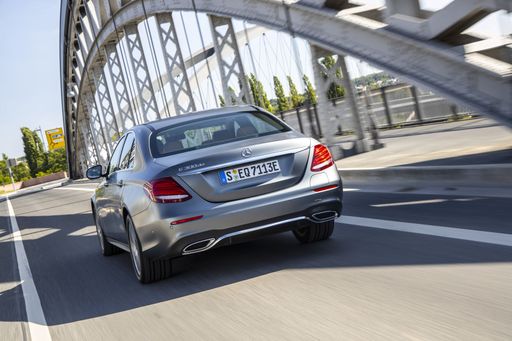 @ group-media.mercedes-benz.com
@ group-media.mercedes-benz.com
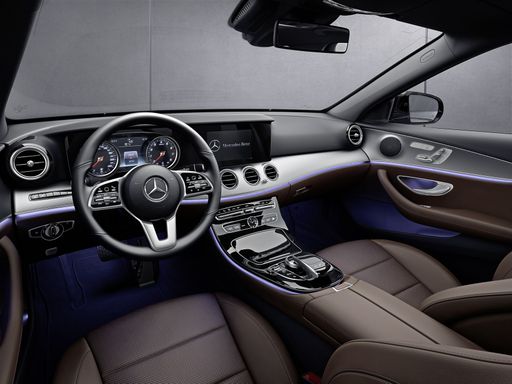 @ group-media.mercedes-benz.com
@ group-media.mercedes-benz.com
Tesla Model Y
Tesla Model Y to praktyczny, przestronny crossover elektryczny, łączący futurystyczny minimalizm wnętrza z zaskakująco żywą reakcją na gaz i łatwością użytkowania na co dzień. Dla szukających nowoczesnej, bezemisyjnej alternatywy to mocny kandydat — potrafi wywołać uśmiech u kierowcy dzięki sprytnym rozwiązaniom i funkcjom wspomagającym prowadzenie, choć zwolennicy bardziej klasycznego charakteru auta mogą poczuć lekki niedosyt.
szczegóły @ tesla.com
@ tesla.com
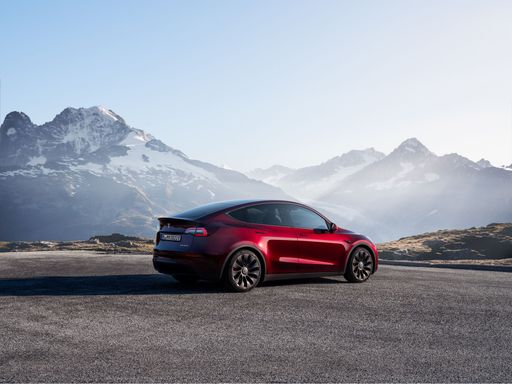 @ tesla.com
@ tesla.com
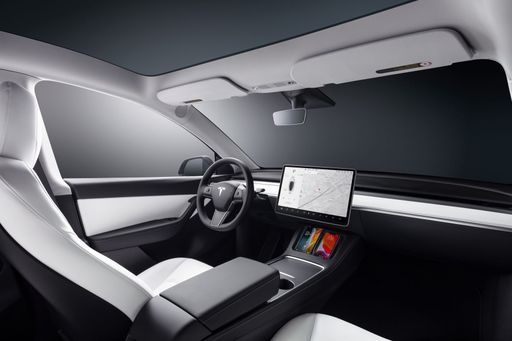 @ tesla.com
@ tesla.com
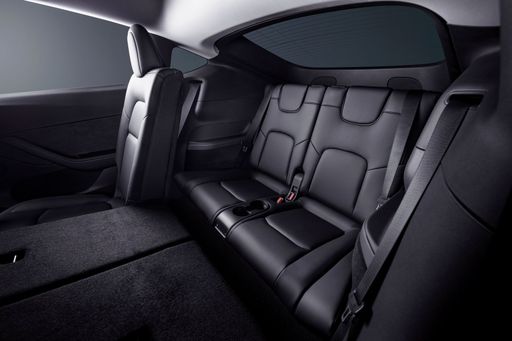 @ tesla.com
@ tesla.com

|

|
|
|
|
Koszty i Zużycie |
|
|---|---|
|
Cena
258800 - 613400 zł
|
Cena
197600 - 272300 zł
|
|
Zużycie L/100km
1.5 - 7.5 L
|
Zużycie L/100km
-
|
|
Zużycie kWh/100km
-
|
Zużycie kWh/100km
13.9 - 16.2 kWh
|
|
Zasięg elektryczny
101 - 116 km
|
Zasięg elektryczny
500 - 622 km
|
|
Pojemność baterii
21.20 kWh
|
Pojemność baterii
64.5 - 85 kWh
|
|
CO2
39 - 172 g/km
|
CO2
0 g/km
|
|
Pojemność zbiornika paliwa
50 - 66 L
|
Pojemność zbiornika paliwa
-
|
Wymiary i Nadwozie |
|
|---|---|
|
Typ nadwozia
Sedan
|
Typ nadwozia
SUV
|
|
Miejsca siedzące
5
|
Miejsca siedzące
5
|
|
Drzwi
4
|
Drzwi
5
|
|
Masa własna
1810 - 2390 kg
|
Masa własna
1976 - 2108 kg
|
|
Pojemność bagażnika
370 - 540 L
|
Pojemność bagażnika
822 L
|
|
Długość
4949 - 4959 mm
|
Długość
4790 - 4796 mm
|
|
Szerokość
1880 mm
|
Szerokość
1921 mm
|
|
Wysokość
1468 - 1480 mm
|
Wysokość
1611 - 1624 mm
|
|
Maksymalna pojemność bagażnika
-
|
Maksymalna pojemność bagażnika
2022 L
|
|
Ładowność
530 - 640 kg
|
Ładowność
418 - 472 kg
|
Silnik i Wydajność |
|
|---|---|
|
Typ silnika
Mild Hybrid Benzyna, Hybryda Plug-in, Mild Hybrid Diesel
|
Typ silnika
Elektryczny
|
|
Skrzynia biegów
Automatyczna
|
Skrzynia biegów
Automatyczna
|
|
Szczegóły skrzyni biegów
Automatyczna skrzynia biegów
|
Szczegóły skrzyni biegów
Reduktor
|
|
Rodzaj napędu
Napęd na tylne koła, Napęd na cztery koła
|
Rodzaj napędu
Napęd na tylne koła, Napęd na cztery koła
|
|
Moc KM
186 - 585 KM
|
Moc KM
299 - 627 KM
|
|
Przyspieszenie 0-100km/h
4 - 8.5 s
|
Przyspieszenie 0-100km/h
3.5 - 5.9 s
|
|
Maksymalna prędkość
222 - 250 km/h
|
Maksymalna prędkość
201 - 250 km/h
|
|
Moment obrotowy
320 - 750 Nm
|
Moment obrotowy
420 - 493 Nm
|
|
Liczba cylindrów
4 - 6
|
Liczba cylindrów
-
|
|
Moc kW
137 - 430 kW
|
Moc kW
220 - 461 kW
|
|
Pojemność silnika
1993 - 2999 cm3
|
Pojemność silnika
-
|
Ogólne |
|
|---|---|
|
Rok modelowy
2024 - 2025
|
Rok modelowy
2025
|
|
Klasa efektywności CO2
E, F, B, D
|
Klasa efektywności CO2
A
|
|
Marka
Mercedes-Benz
|
Marka
Tesla
|
Czy Mercedes E Class jest dostępny z różnymi napędami?
Model oferowany jest z napędem Napęd na tylne koła albo Napęd na cztery koła.
Wyświetlane ceny i dane są szacunkowe, oparte na niemieckich cenach katalogowych i mogą się różnić w zależności od kraju. Te informacje nie stanowią wiążącej oferty.
